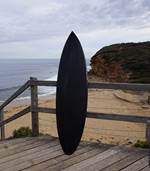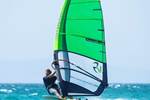ATL Composites epoxy laminating system maintains new surfboard appearance
KINETIX R111 is a solvent-free, liquid epoxy resin optimized with a translucent blue tint that produces a clear, bright finish for surfboard products.

Photo Credit: ATL Composites
ATL Composites (Molendinar, Australia) has launched KINETIX R111, a clear, bright laminating system for production surfboard lamination, which ATL says is being hailed “a game-changer” by the industry’s leading proponents.
A solvent-free, liquid epoxy resin optimized with a translucent blue tint that produces a clear, bright finish, KINETIX R111 is said to cure to a bloom-free finish that is UV stable and has excellent resistance to yellowing. With a choice of two hardener speeds, fabricators also have a choice of flip speeds for faster production — the H130 Fast, for example, can be flipped within three hours and sanded within five hours at 25°C, which is approximately half the turnaround time of the H125 Standard hardener.
According to Jake Holloway, COO at Shapers, appointed National Distributors for KINETIX R111, the system represents a new benchmark for production boards, allowing epoxy surfboards to maintain a new board look for a longer period of its product lifespan. Further, the epoxy system is user friendly, and enhances product performance.
Related Content
-
Mallinda launches Vitrimax VHM resin for complete composites recyclability
Vitrimax VHM enables “infinite” recyclability, self-healing and tunable properties, reducing manufacturing waste and supporting sustainability for high-performance industries.
-
Nanopoxy, Nione jointly develop nanostructured epoxy resin
Epoxies featuring nanometric niobium pentoxide particles promote toughness, UV radiation resistance and other performance gains.
-
CompoTech uses integrated loop technology to create high-performance mountain bike
CompoTech features its CDuro Epona mountain bike fitted with custom suspension forks, manufactured using its AFL winding and integrated loop technologies.



